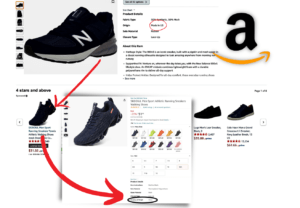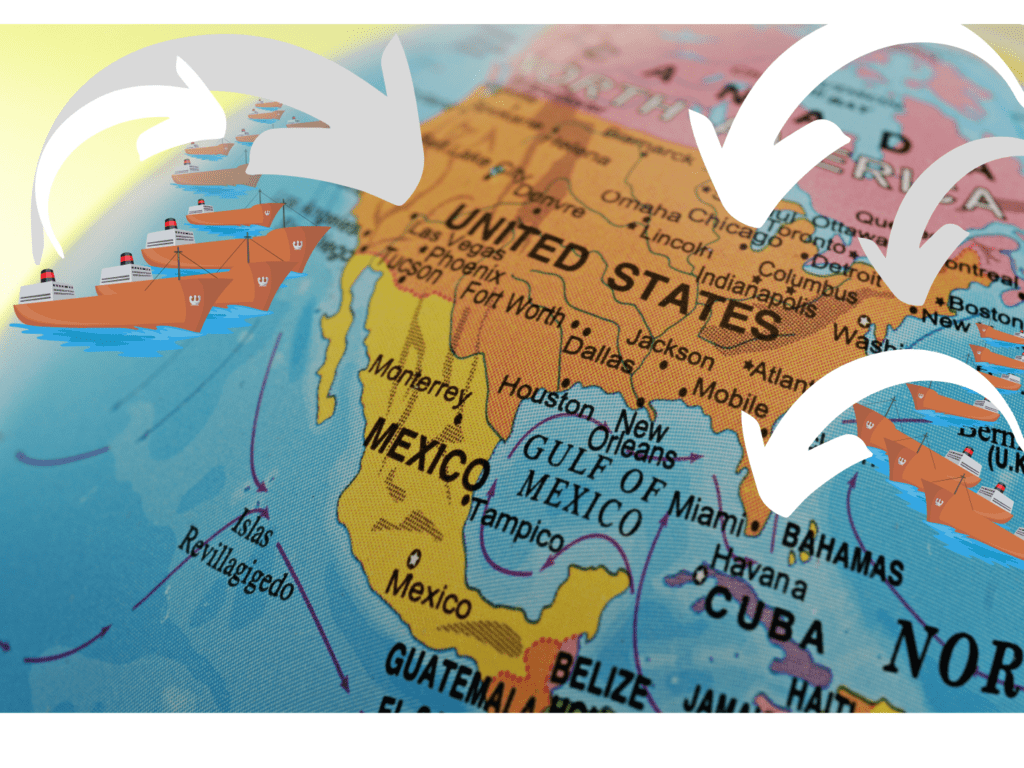Go to any department store, like Macy’s, and pick out a dress or KitchenAid product. On the cotton label, or printed on the box, it will read where the product was made. Do the same on Amazon, or any print catalog cluttering your mailbox every holiday season, and it will just say imported. Why can’t it say where the product is from instead?
The answer: Congress has not updated regulations governing “country of origin labeling” or “COOL” to adjust to the online marketplace. This leaves brick and mortar stores having to comply with standards designed to give consumers more information that simply don’t apply to online giants like Amazon.
Regardless of shopping online or in-person, some people might want to know this information. Just as a person buying a bottle of olive oil may have a preference for pure California olive oil over blended brands, some may want an American made product instead of a Chinese made one. When shopping online, consumers rarely know this unless the company specifically states so — which they often do for marketing purposes to promote American made products. Walmart is famous for this. Amazon does it too, but the online marketplace is loaded with competitor “sponsored ads” on the same page at half the price. These competing products are obviously imports.

These New Balance sneakers can be found by searching for Made in the USA products in the Amazon search bar. Notice that immediately below them are Sponsored Ads with much cheaper alternatives. In this image, a NB sneaker is held up against a Chinese brand for half the price.
Some retailers will do this selectively, on a per-product basis. Pottery Barn does this.
There is a way to fix this problem. Consumers can spend time doing the homework themselves — a gnarly task, even if paying for expensive import tracking subscription services provided by the S&P such as Panjiva. (As an aside, I looked into doing this when creating my own wedding registry.) Startups like WeCultivate have a web extension to download and attach to the Amazon browser to show where some products come from, but not all products and not all online sellers. But these kinds of tools cost thousands of dollars a year and even still have incomplete information as shipping data is not always clear or available. Another way is for Congress to require it.
At the moment, there is a bipartisan bill by Sen. Tammy Baldwin (D-WI) and Sen. Rick Scott (R-FL) called the COOL Online Act. It’s two years old and will have to be re-introduced this session of Congress. The new Congress should take this up. The only ones who are against country of origin labels are multinational companies and e-commerce platforms, or those who claim it is too much of a regulatory burden — preferring to side with the big multinationals over consumers who seek information and transparency to make commercial choices.
Will the new Congress side with global corporate interests, or the majority of Americans and even some businesses who are in favor of online country of origin labeling?
To date, Congress has sided with multinationals, taking the COOL Online Act out of the “China bill”, later named the CHIPS and Science Act, which was enacted into law last year.
People Care About Product Origin
In May 2020, an IBM and Institute for Business Value survey of 25,000 consumers showed that 25% of survey respondents said they wanted to shop locally and buy goods made by American manufacturers.
Another survey by the Reshoring Institute said 70% of respondents liked the idea of buying American made goods and support online retailers labeling country of origin. The products themselves already have the label on them. Whether it is a catalog order or an Amazon order for new bed linens, the label on the product will read where it comes from. E-commerce platforms can do the same, rather than just marking the product as “imported”.
In 2021, some 2,189 businesses signed a letter addressed to the U.S. Senate in support of online labeling. It was ignored in favor of protecting large multinationals and their cheap imports.
Labeling does not ban imports, or put imports at an unfair advantage. It is no different than buying vodka from Sweden, instead of buying vodka from Russia; or buying an oak wood floor made from American oak trees, rather than imported wood. Consumers want to know. We already have labeling for other products, including sporadically online. This labeling affects consumer choice.
For years, thanks to the internet, American entrepreneurs have worked with Chinese manufacturers to make consumer goods there and sell them here. They create a website, and everything is farmed out to China — from manufacturing to final logistics.
On Amazon, Chinese families and businesses of all sizes set up shop online to sell almost exclusively to American consumers. They can also do this by placing ads on YouTube. Americans buy the product, often falsely advertised (a small fan advertised as powerful, but small, air conditioner; a simple dental cleaner advertised as a pro dental tool; clothes made from Chinese cotton that is banned from the United States, as Bloomberg reported last year). The purchaser has no recourse to return the product for a full refund if defective, or not the product that was advertised.
Just labeling something as ‘imported’ is insufficient. If I really wanted to know where my bedding came from on a Williams Sonoma website, my only solution would be to subscribe to an import database system maintained by the S&P and try to figure out how to use it tracking transnational cargo ships. No one is doing this. People who are passionate about social justice, the environment, geopolitical issues, or just supporting American made, all think online labeling is a rational move. Instead, we allow for major online retailers to withhold information while simultaneously espousing their green credentials and social responsibilities. If you want to buy the cheaper-priced good that is an import, that is your choice. That remains protected without penalty by COOL Online. But if you don’t want shirts made from slave labor, or simply want to support a local manufacturer, you’re not going to be able to do these things on Amazon or Pottery Barn, or anywhere else online in any meaningful way. They don’t make it easy. A country of origin labeling law makes it possible and empowers the individual consumer to make informed choices. – Robby Smith Saunders, National Security Advisor, Coalition for a Prosperous America
In the meantime, Amazon wins by not having to go the extra mile to label country of origin. Importers don’t have to worry that the company they are selling to, or using as their platform to reach American consumers, is required to jump through extra hoops to conduct business. And while it may be good for consumers based on price, none of this is impacted by a country of origin labeling rule as consumers can still choose the lower priced item. What they can’t do, today, is know where their products are made until they arrive at home.
Poll: Voters Overwhelmingly Want Their Beef Labeled to Show What Country It Came From













